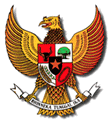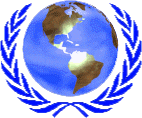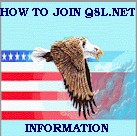|


O R A R I
Organisasi Amatir
Radio Indonesia
Zone 28 Oceania








Best view with:

 800 x 600 pixels
800 x 600 pixels
and
This
TrueType
font
|



 The REPUBLIC OF INDONESIA is located in Southeast Asia on an archipelago of more than 3,000
islands astride the equator. SUMATRA, the westernmost major island, lies south of Burma, while
IRIAN JAYA on the island of NEW GUINEA is the country's eastern extreme. The total area of all
the islands approximates that of Mexico. The islands command vital sea routes between
Australia, Europe, and the Asian mainland and are the principal link between the Indian and
Pacific oceans. The islands lie within the Java, Flores, Banda, and Molucca
seas and are interrupted by the Strait of MALACCA, SUNDA STRAIT, and MAKASAR STRAIT.
Traders, immigrants, cultural ideas, and technologies reaching Indonesia have resulted in great
internal diversity. Indonesia, formerly part of the Netherlands East Indies, proclaimed its
independence on Aug. 17, 1945, after more than 300 years of Dutch control.
The REPUBLIC OF INDONESIA is located in Southeast Asia on an archipelago of more than 3,000
islands astride the equator. SUMATRA, the westernmost major island, lies south of Burma, while
IRIAN JAYA on the island of NEW GUINEA is the country's eastern extreme. The total area of all
the islands approximates that of Mexico. The islands command vital sea routes between
Australia, Europe, and the Asian mainland and are the principal link between the Indian and
Pacific oceans. The islands lie within the Java, Flores, Banda, and Molucca
seas and are interrupted by the Strait of MALACCA, SUNDA STRAIT, and MAKASAR STRAIT.
Traders, immigrants, cultural ideas, and technologies reaching Indonesia have resulted in great
internal diversity. Indonesia, formerly part of the Netherlands East Indies, proclaimed its
independence on Aug. 17, 1945, after more than 300 years of Dutch control.
![People's Consultative Assembly [MPR]](mpr.gif)
GOVERNMENT
The constitution of August 1945 was restored on July 5, 1959, in place of two provisional
constitutions adopted in 1950. Executive power is vested in the president, who is elected by the
People's Consultative Assembly [MPR] for a 5-year term, and in the president's appointed
cabinet. Legislative power rests with the Council of Representatives, but since 20% of this body's
members are appointed from the armed forces, and the government party, Golkar, holds a
substantial majority of the directly elected seats, the president in effect rules by decree.
Governors, district heads, and mayors appointed by the central government administer the 27
provinces, 241 districts, and 55 municipalities. Paralleling this civilian regional administration is a
system of military commands with wide-ranging responsibilities, including the screening of all
public employees and applicants to state universities.

Sukarno, b. June 6, 1901, d. June 21, 1970, originally named
Kusnasosro, the first president of the Republic of Indonesia,
promoted the nationalist movement against the Dutch and declared
Indonesia independent with himself as president in 1945. He
developed an increasingly dictatorial regime and pursued relations
with China until effectively removed from power when the army,
led by General Suharto, suppressed (1965) a Communist coup.
(The Bettmann Archive)
|
HISTORY
Indonesia is thought to have been settled mainly by peoples from Malaya and Oceania, and the
area was dominated from the 3d to the 13th century by the Hindu and Buddhist Indianized
kingdoms of the SRIVIJAYA EMPIRE, Mataram, Sailendra, Kediri, and the MAJAPAHIT
EMPIRE. Islamic influences, brought by Arabic and other traders in the 14th and 15th centuries,
replaced the Indian religions in most areas except Bali. From 1602 until 1798 most of the islands
were controlled by the Dutch East India Company, and
from 1816 to 1949, Indonesia was regarded as a colony of the Netherlands. During World War II,
Japan occupied the islands and encouraged many Indonesians in their quest for independence.
On Aug. 17, 1945, Indonesian nationalists led by SUKARNO and Muhammad Hatta proclaimed
the nation independent. On Dec. 27, 1949, after much dispute, the Netherlands transferred
sovereignty. West Irian became part of Indonesia in 1963 and was renamed Irian Jaya in 1973.
On July 17, 1976, the former Portuguese territory of East Timor was annexed.
Sukarno was Indonesia's first president. He ruled from 1945 to 1965, backed by the military and
supported by the Asian Communist nations. During these years, the economy declined, and
Indonesia's continually closer ties with the Communist bloc stifled assistance from Western
nations. At the end of September 1965, an attempted Communist coup led to an anti-Communist
takeover of the government by the military under General SUHARTO. An estimated 500,000 were
killed in the fighting. Sukarno continued temporarily as president, but de facto control of the
nation was transferred to Suharto, who became acting president in March 1967.

Suharto looked to the West for economic aid while trying to create the internal stability that would
encourage foreign investment. To unify his diverse nation he promoted "Pancasila," a secular
national ideology first enunciated by Sukarno in 1945. After withdrawing from the United Nations
in 1965, Indonesia rejoined that international body in 1966. Indonesia also became a charter
member of the Association of Southeast Asian Nations, founded in 1967. Raids against
Malaysia, initiated by Sukarno in 1964, were ended by Suharto.

Elections, held in 1968 for the first time in 13 years, gave Suharto the presidency. Despite
Muslim fundamentalist opposition, a law passed in 1985 required all mass religious, cultural, and
professional organizations to adopt Pancasila. That same year, Indonesia celebrated the 30th
anniversary of the Bandung conference, a precursor of the NONALIGNED MOVEMENT. Suharto
won a sixth term as president in 1993. His Golkar party won a landslide victory in the 1987
elections and captured two-thirds of the vote in 1992. In 1990, Indonesia restored full trade and
diplomatic ties with China (severed in 1967) while maintaining flourishing trade and investment
relationships with Taiwan and Hong Kong.

Modern Indonesia has never experienced the peaceful transfer of power, and no one knows how
or when the Suharto era will end. Hence, the issue of transfer of power is creating uncertainty
about Indonesia's future stability and policy direction. The United Nations Commission on Human
Rights passed a resolution in March 1993 expressing "deep concern" over human rights violations
in East Timor.





Bibliography:
American University, Indonesia, A Country Study, 4th ed. (1983); Aveling, H., ed.,
The Development of Indonesian Society (1980); Booth, A., and McCawley, P., eds., The
Indonesian Economy During the Suharto Era (1981); Crouch, Harold, The Army and Politics in
Indonesia (1988); Drake, C., National Integration in Indonesia (1989); Green, M., Indonesia
(1991); Holt, Claire, et al., Culture and Politics in Indonesia (1988); Jenkins, D., Suharto and His
Generals (1985); Kahin, A., ed., Regional Dynamics of the Indonesian Revolution (1986);
McDonald, H., Suharto's Indonesia (1981); Mackie, J. A. C., Indonesia: The Making of a Nation
(1981); Peacock, James L., Indonesia: An Anthropological Perspective (1973); Reeve, D., Golkar
of Indonesia (1987); Ricklefs, M. C., A History of Modern Indonesia (1981); Stewart, I. C., and
Shaw, J., Indonesians: Portraits from an Archipelago (1984); Wild, C., and Carey, P., eds., Born
in Fire, The Indonesian Struggle for Independence (1988).
|



![People's Consultative Assembly [MPR]](mpr.gif)






![QSL.net [25885 bytes]](https://www.qsl.net/kb2ytf/qsl_net_big.gif)

